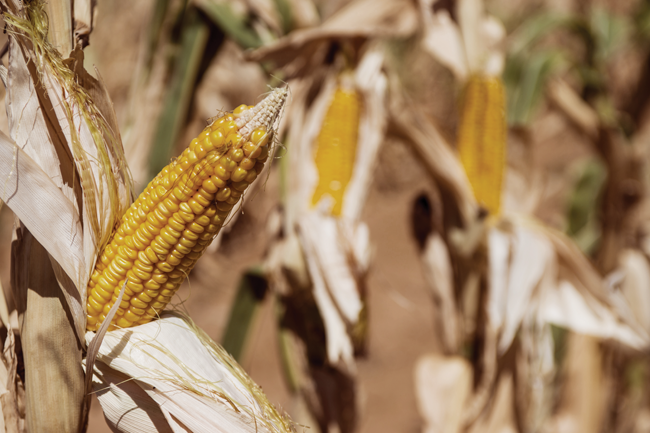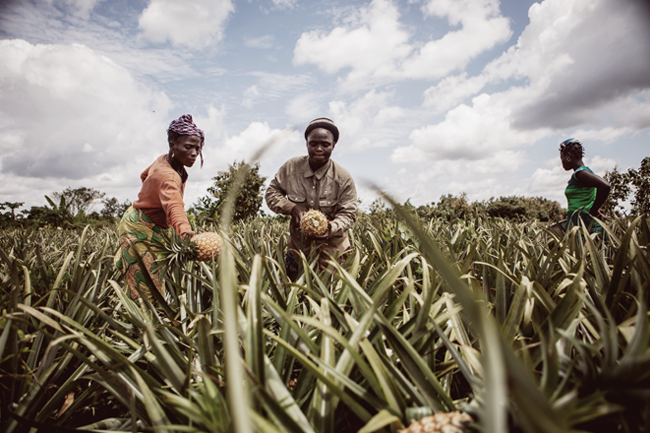Farmers across the world already have to contend with the impact of adverse weather events and other disasters, such as pest infestations, on their harvests. Climate change is expected to intensify the severity and also the frequency of droughts and floods, which means that the farming environment will only become more unpredictable and riskier.
Farmers, especially well-established commercial ones in developed countries, have long had access to agricultural insurance products as a means to mitigate some of the risk and uncertainty they face. More recently – thanks to the development of emerging technologies – financial institutions have been able to start broadening their focus to include smallholder farmers.
According to organisations such as the UN Food and Agricultural Organisation and the International Fund for Agricultural Development (IFAD), smallholder farmers produce up to 80% of the food consumed in sub-Saharan Africa and, when these farmers suffer crop damage, the food security of families and entire communities are at peril.
The South African crop insurance market is roughly worth ZAR1.5 billion. However, according to Andries Wiese, who heads the agriculture division at Hollard Insurance in South Africa, this figure represents an uptake of crop insurance for less than 30% of the total crop area under commercial production. The low uptake, he believes, could be attributed to cost and farmers’ perception that they manage risk through geographical diversification and financial prudence.
Andries Mahlase, Africa manager for business development at Santam Agriculture, says the rate of uptake is even worse for smallholder farmers who have less than 2% of cropping area insured. Crop insurance products, maintains Wiese, have tended to evolve very slowly and still consist mainly of two products – Multi-Peril Crop Insurance (MPCI) and hail insurance – with the split in terms of uptake in South Africa being roughly 80% to 85% for hail policies and the balance for multi-peril.
‘People tend to limit agricultural insurance in Africa to only crop and livestock insurance. Mitigating against risk within the agricultural sector has to go wider than that and also encompass the assets that make farming possible and viable,’ he says.
According to Mahlase, in sub-Saharan Africa, excluding South Africa, insurance penetration as a percentage of GDP is generally low at less than 2%. ‘While agriculture is the most important economic activity, it is ironic that very little crop insurance is offered in sub-Saharan Africa.’ He ascribes this to lack of knowledge among smallholder farmers about how the insurance works, its benefits and costs – considered too high by many of these farmers. In addition, there is a general lack of reliable production data available to enable insurers to properly model and price the risks.
‘Crop insurance is a grudge purchase and it is not accessible to most farmers, particularly smallholder farmers. Farmers generally use MPCI as collateral security for production loans. MPCI insurance tends to be expensive as it covers all perils including drought. It is, therefore, important to forge stronger public-private partnerships [PPPs] to ensure affordability and broaden access to products that include weather-based index, area-yield index and MPCI insurance solutions for all farmers,’ says Mahlase.
Despite the challenges, a number of positive initiatives driven by governments, farmers and the private sector through strong PPPs are beginning to slowly reverse the trend of low crop-insurance uptake among smallholder farmers. He cites the Zambian Farmer Input Support Programme, which aims to reach 1 million farmers during the 2017/18 crop season.

According to a WEF report this year, Innovation with a Purpose: The role of technology innovation in accelerating food systems transformation, the food and agriculture sectors have been relatively slow to harness the power of emerging technologies, such as digital building blocks, big data and the internet of things.
The report notes that low-cost methods for aggregating and collecting data will be essential for scaling insurance solutions quickly. ‘Harnessing the power of big data and analytics, financial institutions can lower transaction costs (through reduced need for field inspections) and mitigate agriculture-specific risks. For both index and conven-tional insurance applications, big data derived from current and new sources – for example crowdsourcing, cellphone apps, satellite and radar-based imaging and drone-based imaging – can be used to improve modelling and reduce the risks of providing insurance products to farmers.’
One example referred to in the report is the South African start-up company Mobbisurance, which was launched in 2014 to offer affordable insurance and market access to smallholder farmers. Mobbisurance enables farmers to insure against weather-related risks by signing up with their mobile phones. The product then monitors their crops and the weather by utilising satellite data and satellite technology. By using technology to reduce the need for site visits, the company is able to offer their products at a more affordable rate compared with traditional crop insurance.
In Nigeria, the Consultative Group to Assist the Poor and Pula Advisors have partnered to bring satellite-based agricultural insurance to smallholder farmers. According to a statement, their area-yield index insurance works by determining the average agricultural yield in a defined area.
The companies will work with a consortium of insurance and agribusiness companies to bring to market a product that reimburses farmers in kind for fertilisers they bought ahead of below-average harvests. The partnership’s goal, says the statement, will be to lower the cost by enabling providers to use satellite imagery instead of auditors to determine average yields.
In the Microinsurance Network’s latest annual journal, the State of Microinsurance 2017, Pierre Casal Ribeiro, microinsurance analyst at Grameen Crédit Agricole Foundation, shares lessons learned about providing index-based crop insurance to smallholder farmers from the Agriculture and Climate Risk Enterprise (ACRE) Africa initiative, in which the foundation is a shareholder. Ribeiro says that, at the end of 2016, cumulatively more than 1 million farmers in East Africa were insured by products designed by ACRE to insure their dairy cows or their crops, including maize, sorghum, coffee, sunflower, tea, cashew nut or potato.
ACRE’s most popular product, writes Ribeiro, is packaged with maize seeds. ‘The replanting guarantee is an insurance directly included in the price of a bag of seeds. When opening the bag, farmers will find a card with a code to send by SMS to activate a 21-day cover. The insurance is free for the client, as the premium is paid by the input company.’ Once a client has sent the activation code to ACRE, the farmer’s location is captured and ACRE can then monitor the weather in the area, thanks to satellite imagery and automated weather stations. ‘If there is insufficient rainfall following the 21 days after planting, germination fails. Insured farmers are then automatically reimbursed the value of the seeds on their mobile wallets, without filing any claim,’ writes Ribeiro.
What they found, however, was that despite the insurance being free, many farmers did not activate the product. According to feedback from clients, the reason was that many of them did not read or understand the card with the activation code and instructions. To address this issue, the insurance card was redesigned to make it clearer, and field promoters were hired each season to raise awareness about insurance and explain the product.
Building on this replanting guarantee model, ACRE decided last year to pilot a top-up cover giving farmers the option of extending the coverage for the entire season, and not only for the germination phase. According to Ribeiro: ‘Enrolment is also offered through the mobile phone, but this time farmers need to pay the premium for the additional cover.’
Francesco Rispoli, senior technical specialist at IFAD, is quoted in the State of Microinsurance 2017 report as saying that agricultural index insurance has observed rapid progress in recent years, due in large part to the fact that data collection has brought down transaction costs significantly. However, he said, some constraints still remained in upscaling pilot programmes and addressing implementation challenges.
‘Developing index insurance products requires capacity and expertise, which is not widely available, and less so at the country level. Another key challenge is basis risk, which is the mismatch between actual loss and the compensation received by the farmer.’ Rispoli also noted the need for good-quality agricultural data saying that the lack of reliable data hampered the creation of reliable products and scaling up. There were also operational challenges such as distribution. ‘Delivering at scale and low cost, and providing added value, by bundling index insurance with other products, for instance, are important hurdles. All these issues can undermine the scalability and sustainability of index insurance products, if not approached in the right way.’




